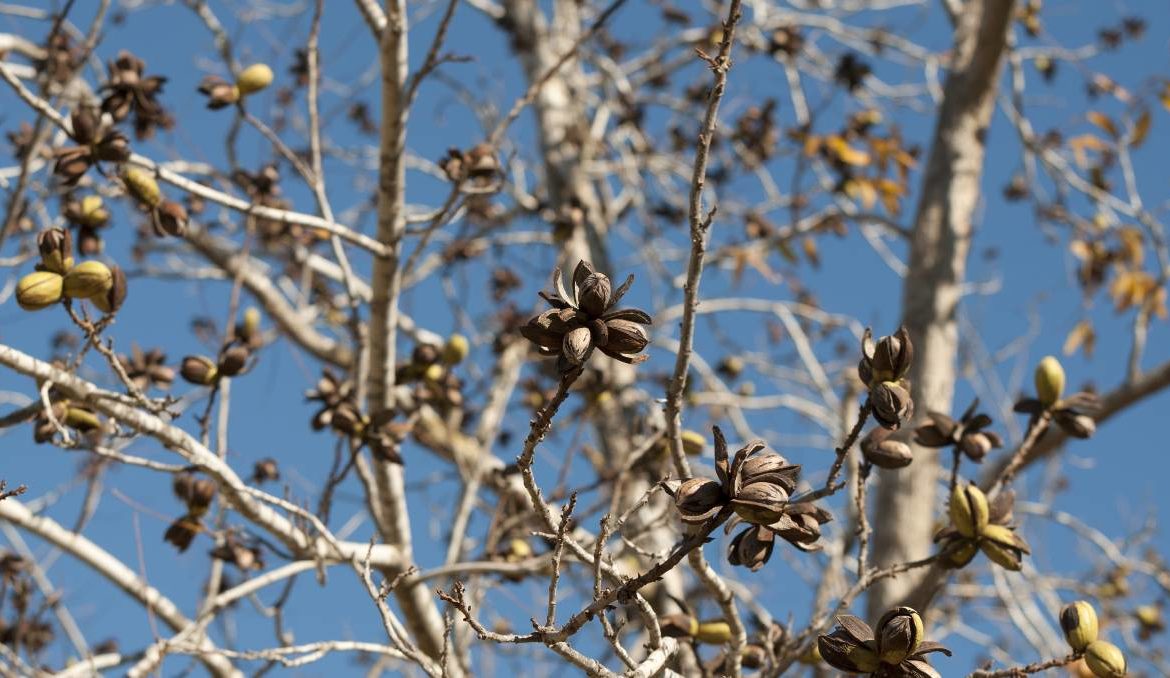news, latest-news, pecan tree, turner, canberra, protected trees
A Turner man’s application to have a large pecan tree removed from his block which he claimed was dangerous and at risk of dropping branches and damaging his home has been blocked by a tribunal. Rahul Patel first applied to the ACT Conservator of Flora and Fauna to have the 18-metre high tree removed in 2018, saying they had become over two years when branches fell on their backyard and onto a neighbour’s block. The first application to remove the tree, which is in the middle of Mr Patel’s yard and subject to the Tree Protection Act due to its size, was blocked. Mr Patel had cracks in his house inspected by a structural engineer, who said they were caused by the tree’s roots interacting with surrounding soil. Mr Patel then lodged a second application to have the tree removed which was refused in March. Mr Patel argued before the ACT Civil and Administrative Tribunal in October that the tree, which has a more than 12-metre wide canopy, represented an unacceptable risk to private safety, was causing substantial damage to a structure and remediation of the trees would be ineffective. But tribunal member Adrian Davey acknowledged the apprehension the tree caused Mr Patel, his wife and their neighbours, but found the tree did not present an unacceptable level of risk. Mr Davey was also unable to accept the Carya illinoensis tree was the sole cause of cracking in the house. A structural engineer called by Mr Patel as a witness, Tarek El-Ansary, had said the cracking in the walls of the house was substantial and had been caused by the tree. However, a structural engineer called as a witness by the Conservator of Flora and Fauna, Linden Coot, said the cracking was normal. While the tree had likely contributed to the cracking, poor drainage was among other significant contributors, Mr Coot said. Mr Davey said the expert evidence left him with a number of potential causes of the house’s damage. “The Tribunal is unable, therefore, to conclude on the balance of probabilities, that the tree has been demonstrated to be the cause of substantial damage to the structure of the house,” he said. Mr Davey said he was not satisfied Mr Patel had proven the tree met the Tree Protection Act’s removal criteria. He said he was neither satisfied the tree was the dominant cause of damage to the house nor accepted alternative remediation for the tree had been shown to be ineffective. “While there is always a level of risk associated with the possibility of branches falling from any tree, this particular case requires persuasive evidence that the tree poses an unacceptable risk to private or public safety,” he said.
/images/transform/v1/crop/frm/XBxJDq6WLub2UphQ8wEq23/4dffeb73-029a-44dc-aa90-427f1e80b77c.jpg/r10_219_4277_2630_w1200_h678_fmax.jpg
A Turner man’s application to have a large pecan tree removed from his block which he claimed was dangerous and at risk of dropping branches and damaging his home has been blocked by a tribunal.
Rahul Patel first applied to the ACT Conservator of Flora and Fauna to have the 18-metre high tree removed in 2018, saying they had become over two years when branches fell on their backyard and onto a neighbour’s block.
The first application to remove the tree, which is in the middle of Mr Patel’s yard and subject to the Tree Protection Act due to its size, was blocked.
Mr Patel had cracks in his house inspected by a structural engineer, who said they were caused by the tree’s roots interacting with surrounding soil. Mr Patel then lodged a second application to have the tree removed which was refused in March.
Mr Patel argued before the ACT Civil and Administrative Tribunal in October that the tree, which has a more than 12-metre wide canopy, represented an unacceptable risk to private safety, was causing substantial damage to a structure and remediation of the trees would be ineffective.
But tribunal member Adrian Davey acknowledged the apprehension the tree caused Mr Patel, his wife and their neighbours, but found the tree did not present an unacceptable level of risk.
Mr Davey was also unable to accept the Carya illinoensis tree was the sole cause of cracking in the house.
A structural engineer called by Mr Patel as a witness, Tarek El-Ansary, had said the cracking in the walls of the house was substantial and had been caused by the tree.
However, a structural engineer called as a witness by the Conservator of Flora and Fauna, Linden Coot, said the cracking was normal. While the tree had likely contributed to the cracking, poor drainage was among other significant contributors, Mr Coot said.
Mr Davey said the expert evidence left him with a number of potential causes of the house’s damage.
“The Tribunal is unable, therefore, to conclude on the balance of probabilities, that the tree has been demonstrated to be the cause of substantial damage to the structure of the house,” he said.
Mr Davey said he was not satisfied Mr Patel had proven the tree met the Tree Protection Act’s removal criteria.
He said he was neither satisfied the tree was the dominant cause of damage to the house nor accepted alternative remediation for the tree had been shown to be ineffective.
“While there is always a level of risk associated with the possibility of branches falling from any tree, this particular case requires persuasive evidence that the tree poses an unacceptable risk to private or public safety,” he said.







